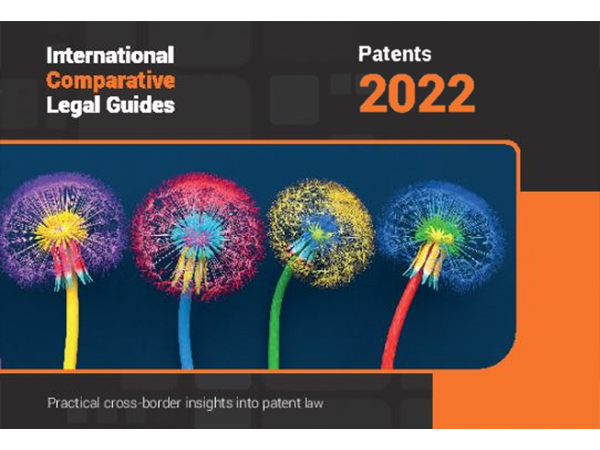
Intellectual Property
Viewpoints
Filter by:
How Compulsory Licenses Can Affect Domestic and Foreign Prosecution
January 24, 2024 | Blog | By Michael Van Loy, Sophia Petrichenko
Compulsory licensing is a practice that allows a third party to produce or use a patented product or process without the consent of the patent owner. The practice may be implemented to ensure patent owners are utilizing the technology in which they were granted exclusive rights.
Year in Review: The Most Popular IP Posts of 2023
January 4, 2024 | Blog | By Christina Sperry
As 2024 begins and intellectual property (IP) strategies are being developed for the new year, it is a good time to reflect on what IP issues were prominent in 2023. According to many readers, hot IP topics included patent litigation strategies, artificial intelligence (AI), and pharmaceutical-related patent applications.
Supercapacitor Patent Row Between CAP-XX and Maxwell Technologies Goes to Court this Week
December 13, 2023 | Blog | By Brad M Scheller , Amy LoBue
After four years of litigation, Australian-based CAP-XX, Ltd. finally commenced its patent infringement trial this Monday against Maxwell Technologies, Inc. before Judge Jennifer Hall and a Delaware jury and is set to end on Friday.
Basics – How an Inventor’s Own Work Affects Patent Applications
December 6, 2023 | Blog | By Peter Hecker, PhD, Lee Johnson, PhD
Imagine excitedly filing a patent application, waiting years for the case to be examined, and then finding your application rejected on grounds that it is obvious or anticipated by your own previously published work. This is a common situation, but it may be avoided with careful planning.
The Impact of Venture Capital Funding on Entity Status
November 10, 2023 | Blog | By Michael Van Loy, Jessica Zhang, Qi Zhang
Understanding the implications of venture capital funding on a company’s size classification is crucial, especially when it jeopardizes its “small entity” status and raises concerns with the United States Patent and Trademark Office. Member Michael D. Van Loy, PhD and Associates Jessica Zhang and Qi Zhang break down these complexities, underscoring the importance of accurately determining entity status to avoid pitfalls such as patent invalidation.
AI-Based Patent Applications: Recent History and the Future
October 30, 2023 | Blog | By Vishak Ganesh, Frank Gerratana
The emergence of artificial intelligence (AI) as a field of technology has correlated with an increase in patent application filings on AI-related inventions over the past two decades. With more filings than ever, businesses and institutions developing AI-based technology are claiming rights over key innovations in this space.
Federal Circuit Puts the Onus on Patent Owners to Disclaim Patent Term or Face Double-Patenting
September 7, 2023 | Blog | By Peter Cuomo, Thomas Wintner, James Whittle, PhD
On August 28, 2023, the U.S. Court of Appeals for the Federal Circuit, in In re Cellect, Appeal No. 2022-1293, evaluated for the first time how statutorily authorized patent term adjustments interact with the judge-made doctrine of obviousness-type double patenting.
Picture Claims as an Effective Patent Strategy: Top 10 Reasons to Precisely Tailor Your Patent Claim
September 6, 2023 | Blog | By James Whittle, PhD, Terri Shieh-Newton, Dean Farmer, PhD
A “picture” claim refers to a patent claim precisely tailored to track a particular product’s important advantages and features. When drafting a patent application, one should describe various embodiments of the invention and include both picture claims, tailored to those embodiments, and broader claims, to encompass groups of embodiments.
Federal Circuit Clarifies That Secondary Considerations Must Be Considered Both Individually And As A Whole In An Obviousness Analysis
August 31, 2023 | Blog | By Michael Newman, Peter Cuomo, Paul Weinand
On August 24, 2023, the U.S. Court of Appeals for the Federal Circuit, in Volvo Penta of the Ams. LLC v. Brunswick Corp., Case No. 22-1765, vacated a Final Written Decision of the Patent Trial and Appeal Board (PTAB) holding all claims of U.S. Patent 9,630,692 (the “’962 patent”) unpatentable as obvious.
Distinguishing Patent Protection from Patient Safety – A Role for the FDA
August 21, 2023 | Blog | By Peter Hecker, PhD, Lee Johnson, PhD
At its heart, a patent grants the right to stop another person from doing whatever falls within the scope of the patent’s claims. A patent is not a right to practice what is included in the patent, or a government stamp of approval on everything within the scope of its claims.
Can Enablement and Written Description Bars be Lower for Method-Of-Treatment Patent Claims?
August 21, 2023 | Blog | By Lei Xu, PhD, Dean Farmer, PhD, Christina Sperry
Patent offices may reject a patent application with claims reciting using a composition to treat a disease, based on the requirement that the claimed treatment is not fully supported by the application.
Mintz members Lisa Adams and Marguerite McConihe contributed to Super Lawyers article titled, “How Do You Protect Intellectual Property in a Business Transaction?” The article helps give insight into the process of protecting your company's IP in a business transaction, including due diligence and getting legal help.
Inside the Deal: The Color of Money
August 18, 2023
Steven Andersen from LINE interviews Michael Renaud and Marguerite McConihe for the Spring 2023 issue.
An Overview of Shotgun Pleadings in the Federal Courts
August 7, 2023 | Blog | By Joe Rutkowski, Peter Cuomo
Advice that may have served House of Pain in their 1992 hit song, “Jump Around,” to “bring a shotgun” to battle likely does not translate well to plaintiffs in federal litigation contemplating bringing a “shotgun” pleading to court. In this article we explore types of shotgun pleadings identified by courts and outline potential responses to a shotgun pleading.
Why Pharma Companies Should File Patents Later In The R&D Process
July 25, 2023 | Blog | By Alex Trimble, PhD
Filing a pharmaceutical patent application after the start of Phase II clinical trials can maximize the patent’s value and exclusivity period. In an article also published in IAM magazine, Mintz Member Alex Trimble talks about delayed filing options and how to avoid invalidation of the patent based on its “public use” during the clinical trial or published information about the trial.
Split Decisions: Can a Complaint Serve as Knowledge of Indirect Infringement?
July 21, 2023 | Blog | By Daniel Weinger, Simone Yhap
A frequent issue seen within patent litigation is whether serving a complaint satisfies the knowledge requirement for post-complaint indirect infringement. This issue affects the amount of, if any, damages a patent owner can obtain.
Disqualifying an Inventor’s Prior Publication as Prior Art – Invoking §102(b)(1)(A)
July 6, 2023 | Blog | By James Whittle, PhD, Dean Farmer, PhD
An invention is not patentable if it was described in, or obvious in view of, an earlier printed publication. See 35 U.S.C. 102(a)(1). This blog post addresses how to overcome an anticipation or obviousness rejection where an inventor is the author or otherwise the source of subject matter in the publication cited as prior art
EXCLUSIVE RIGHTS: Intellectual Property — Bad Dog? “Bad Spaniels” at SCOTUS
June 27, 2023 | Podcast | By Daniel Weinger, Karen K. Won
In this episode of the EXCLUSIVE RIGHTS: Intellectual Property podcast, IP Members Daniel Weinger and Karen Won discuss the recent Supreme Court decision in Jack Daniels v. VIP Products addressing whether the “Bad Spaniels” dog chew toy violates the Lanham Act for trademark infringement.
Supreme Court: Parody Not a Shield from Trademark Infringement
June 9, 2023 | Blog | By Michael Graif
In Jack Daniels Properties, Inc. v. VIP Products LLC, (slip. op. No. 22-148, June 8, 2023), the United States Supreme Court reversed the Ninth Circuit, ruling that a “Bad Spaniels” dog toy designed to look like a Jack Daniels liquor bottle did not avoid trademark infringement merely because it was a parody.
Explore Other Viewpoints:
- Data Centers & Digital Infrastructure
- AI: The Washington Report
- Antitrust and Federal Regulation
- Appellate
- Arbitration, Mediation & Alternate Dispute Resolution
- Artificial Intelligence
- Awards
- Bankruptcy & Restructuring
- California Land Use
- Cannabis
- Class Action
- Complex Commercial Litigation
- Construction
- Consumer Product Safety
- Corporate Governance (ESG)
- Cross-Border Asset Recovery
- DEI Legal Developments
- Debt Financing
- Direct Investing (M&A)
- Diversity
- EB-5 Financing
- Education & Nonprofits
- Employment
- EnforceMintz
- Environmental (ESG)
- Environmental Enforcement Defense
- Environmental Law
- Environmental, Social, and Corporate Governance (ESG)
- FDA Regulatory
- False Claims Act
- Federal Circuit Appeals
- Financial Institution Litigation
- Government Law
- Growth Equity
- Health Care
- Health Care Compliance, Fraud and Abuse, & Regulatory Counseling
- Health Care Enforcement & Investigations
- Health Care Transactions
- Health Information Privacy & Security
- IP Due Diligence
- IPRs & Other Post Grant Proceedings
- Immigration
- Impacts of a New US Administration
- Insolvency & Creditor Rights Litigation
- Institutional Investor Class Action Recovery
- Insurance & Financial Services
- Insurance Consulting & Risk Management
- Insurance and Reinsurance Problem-Solving & Dispute Resolution
- Intellectual Property
- Investment Funds
- Israel
- Licensing & Technology Transactions
- Life Sciences
- Litigation & Investigations
- M&A Litigation
- ML Strategies
- Managed Care
- Medicare, Medicaid and Commercial Coverage & Reimbursement
- Mergers & Acquisitions
- Patent Litigation
- Patent Prosecution & Strategic Counseling
- Pharmacy Benefits and PBM Contracting
- Portfolio Companies
- Privacy & Cybersecurity
- Private Client
- Private Equity
- Pro Bono
- Probate & Fiduciary Litigation
- Products Liability & Complex Tort
- Projects & Infrastructure
- Public Finance
- Real Estate Litigation
- Real Estate Transactions
- Real Estate, Construction & Infrastructure
- Retail & Consumer Products
- Securities & Capital Markets
- Securities Litigation
- Social (ESG)
- Special Purpose Acquisition Company (SPACs)
- Sports & Entertainment
- State Attorneys General
- Strategic IP Monetization & Licensing
- Sustainable Energy & Infrastructure
- Tax
- Technology
- Technology, Communications & Media
- Technology, Communications & Media Litigation
- Trade Secrets
- Trademark & Copyright
- Trademark Litigation
- Unified Patent Court (UPC)
- Value-Based Care
- Venture Capital & Emerging Companies
- White Collar Defense & Government Investigations
- Women's Health and Technology






